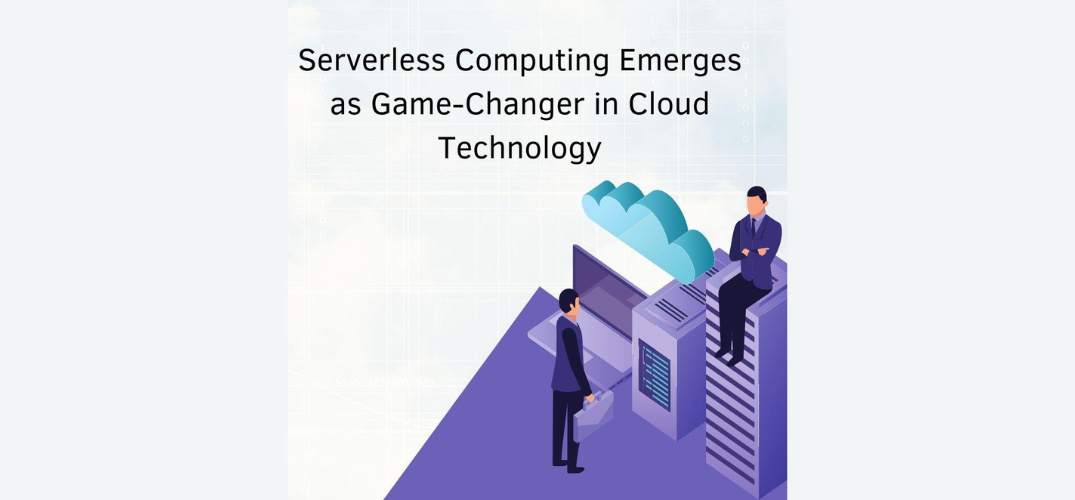In today’s rapidly evolving technological landscape, groundbreaking research by cloud computing expert Vaibhav Vudayagiri reveals the transformative impact of serverless computing on software development. As organizations seek more efficient deployment solutions, his comprehensive study demonstrates how this paradigm shift is reshaping the industry, with the serverless market poised to reach $21.1 billion by 2025, fundamentally changing how applications are built and deployed.
Evolution of Cloud Services
Despite its potentially misleading name, serverless computing doesn’t eliminate servers but revolutionizes their management approach. This innovative model transfers infrastructure responsibilities to cloud providers, allowing developers to focus exclusively on code creation. The technology has gained remarkable traction, with adoption rates projected to surge from 30% in 2020 to 85% by 2025, signaling a fundamental shift in cloud computing strategies.
Financial Benefits
The economic advantages of serverless architecture are compelling, with organizations reporting average cost reductions of 26% in cloud expenditure. The pay-as-you-go model eliminates expenses associated with idle servers, while automatic scaling capabilities enable applications to handle traffic spikes of up to 100,000 requests per second without manual intervention, delivering both cost efficiency and robust performance. Research indicates that organizations adopting serverless architectures experience up to 47% reduction in total infrastructure costs over 12 months.
Developer Productivity
A standout benefit is the 44% increase in developer productivity. Freed from infrastructure management tasks, development teams can concentrate on innovation and feature development. This enhanced efficiency translates to faster market delivery, with organizations achieving a 34% reduction in their application development lifecycle, creating a significant competitive advantage. Teams report deploying 35% more features annually after adopting serverless architecture.
Technical Advancements
While serverless computing presents challenges such as cold start latency, innovative solutions have emerged to address these issues. Function optimization and provisioned concurrency have successfully reduced cold start occurrences by 90% and decreased latency by 70%, ensuring consistent performance and reliability in serverless applications. Advanced monitoring tools and optimization techniques have further improved performance metrics across various deployment scenarios.
DevOps Integration
The marriage of serverless architecture with DevOps practices has produced remarkable results. Organizations report 66% faster feature deployment, 50% fewer deployment failures, and 75% improved recovery time. This synergy creates a more efficient and reliable development pipeline, enabling faster innovation and better service delivery. Implementation of Infrastructure as Code (IaC) in serverless environments has reduced infrastructure management time by up to 80%.
Monitoring and Performance
Modern serverless platforms excel in monitoring and logging capabilities. Organizations utilizing centralized logging resolve 60% of production issues without escalating to development teams. Furthermore, distributed tracing improves debugging efficiency by 80% and reduces performance bottleneck identification time by 60%, ensuring optimal application performance.
Security and Reliability
Security remains a cornerstone of serverless architecture. Major providers maintain service level agreements of 99.95% or higher, surpassing traditional architectures. Built-in security features and high availability make serverless computing ideal for mission-critical applications requiring robust protection and performance. Organizations report a 45% decrease in security-related incidents after migrating to serverless platforms.
Operational Impact
The serverless model demonstrates exceptional operational efficiency. Organizations report an 80% reduction in infrastructure maintenance time and a 60% improvement in resource utilization. These gains allow teams to focus on innovation rather than routine maintenance, driving business value and competitive advantage.
Industry Applications
Real-time processing capabilities through serverless architecture have revolutionized multiple sectors, delivering remarkable improvements in operational efficiency. Organizations report substantial benefits, including 40% cost reductions in processing operations and 76% faster execution times. This transformation is particularly evident in processing speeds, which have scaled dramatically from 100 operations per second to over 1,000 during peak periods, demonstrating serverless computing’s robust ability to handle intensive workloads while maintaining cost-effectiveness across diverse industries.
In conclusion, Vaibhav Vudayagiri‘s comprehensive research demonstrates that serverless computing transcends traditional technological advancements, marking a pivotal shift in cloud computing paradigms. With its potent combination of reduced complexity, enhanced scalability, and accelerated developer productivity, serverless architecture is emerging as the cornerstone of modern software development. As adoption rates surge and innovations continue, this technology is set to dominate the digital landscape, with projections indicating it will become the standard choice for application development across industries by 2025.

































